Рено RS17 (представяне)
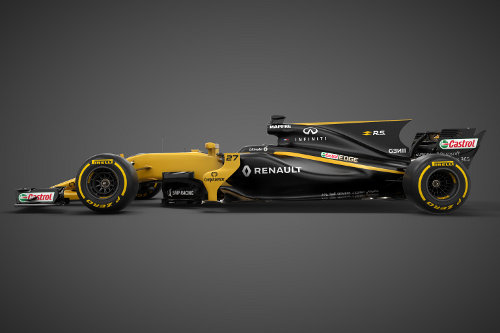
Рено представиха болида си за сезон 2017, който се нарича RS17.
Представянето можеше да се гледа on-line.

(авторски права на снимките - Рено)
(снимки от twitter)
Ново оцветяване за Рено тази година. Жълтото и черното заемат по половин болид.
Както всички представени до момента болиди и този на Рено е с нос с издатък. Изглежда, че тази година няма да имаме много вариации на тема носове, като вероятно Мерцедес ще са единствения отбор с различно решение. Но ... кой знае. Има още доста болиди да видим. На носа на болида има S-duct, а под него две малки вертикални плоскости, които насочват въздуха в желаната посока. Пилоните на носа обаче са с доста интересна форма. Подобно решение първо беше използвано от макЛарън, но Рено са стигнали доста по-далече. Самите пилони са доста по-дълги.
Интерс будят и дефлекторите около кутиите за радиаторите. Долната им част, която е свързана с пода е изнесена напред, а горната е закрепена с S-образна хоризонтална плоскост към кутията за радиатора. Самата вертикална плоскост е с три вертикални разреза и очевидно тази област ще бъде доста експлоатирана от отборите през сезона. Интерес будят и завръщащите се големи дефлектори разположени зад предните гуми. Този сезон те ще са доста по-големи и отборите ще работят доста активно за да изстискат всичко от правилата.
До отвора на кокпита има малки вертикални крила подобни на решението на Ред Бул.
И Рено са подходили доста креативно към въздухозаборника над главата на пилота. "Ушите", които имаха до момента вече са събрани заедно с основния отвор, който пък е разделен на две. Долната по-малка част най-вероятно служи за охлаждането на ERS.
Очакваната "перка на акула" е на капака на двигателя на Рено-то. Задницата е доста събрана и виждаме колко много свободно място има отзад. На пода има два разреза, но вероятно тук ще се появят доста по-сложни решения през сезона.
Вертикалните плоскости на задното крило са с вече познатите ни форми. И при Рено хоризонталните разрези са с отворен преден край. Рено са взаимствали още едно решение на МакЛарън. Вертикалните разрези в предната част на вертикалните плоскости.
Дифузьорът според новите правила ще бъде доста по-голям и това се вижда на някои от снимките на Рено-то. Виждат се и добре познатите ни каскади с елементи върху кутиите за охлаждане на задните спирачки.
Първите впечатления от болида на Рено са положителни. Цветовата схема е сполучлива, а виждаме и достаинтересни технически решения. Рено заявиха, че целта им тази година е петото място в шампионата. Остава ни да видим дали ще успеят да я постигнат.






Нико Хюлкенберг:
What attracted you to Renault Sport Formula One Team?
It’s a new and fantastic opportunity for me. Going to a manufacturer team is something I’ve always wanted and it’s with a team that has been at the top in the past and is fighting its way back there. It’s a great opportunity for me as I want to be challenging for world championships and victories. Renault returned last year as a manufacturer team and share the same ambitions as me, so it’s a great opportunity on both sides.
How has the introduction to the team been?
It’s early days of course, but so far so good! I’ve seen around the factories at Enstone and Viry, I have a very good impression of both sites and the people working there. It’s definitely a good line-up of people and you can feel the passion to succeed; there’s a good vibe with highly motivated individuals. There’s a lot of change occurring at the Enstone site and this illustrates the scope of the expansion. It’s great and it’s very encouraging to be part of this.
How are you approaching the long term project?
I’m very happy to be part of it. There’s a lot of work ahead and we’re both looking for a positive long term relationship. For sure 2017 comes after a build-up year in 2016 where there was improvement and crucially growth in many areas for the future. The target is to move forward in the midfield over the season ahead and be in shape to take another step forward in 2018. I am inspired with being part of this and adding my share to push us all to better performances.
Your new team is your fourth in Formula 1; what benefit can your experience bring to the equation?
I’m bringing everything I’ve got! My passion, my experience, my hunger for success. At the end of the day, it’s a team effort and everyone is important, but ultimately the two drivers have to deliver on the track. I know the goals the team has for the season and I’m taking everything step by step to make the most of the opportunity for us all to achieve good things. I will do everything I can to ensure success happens.
You’ve said having a new team is like having a new girlfriend?
Indeed! We’re both growing together and that’s the exciting aspect of this new relationship. We’re learning from each other and developing together so this is satisfying. My first race weekend with the team will be a milestone, and there’s a lot to learn. It’s new people, different structures, different operations. For sure there will be a steep learning curve at the first couple of races. It’s a challenging time to change as the impact of the rule changes is a bit of an unknown, so there’s a learning process there for all too. There’s also great potential for us with these rule changes and I hope this helps us to take a step forward in competitiveness. It’s really difficult to judge where we could be ahead of the season start. Everything I’ve seen so far has been very positive; I’ve had some great dates so far!
What do you think of the R.S.17?
It looks sexy! When I first saw it in the wind tunnel I was impressed.
What do you want from the R.S.17?
It’s all about having a strong package, as you need a car that is a good all-rounder to perform well across the season. It needs to work well on all the different track types we visit with all the different types of tyres. It needs to work on all the different corner speeds and have strong handling with a good balance so you can work in harmony with the car, a having stable rear end is also particularly crucial. That’s what I’m looking for.
How much tougher physically do you expect the 2017 car to be and what have you done in preparation for this?
I’ve been working out a lot. My preparations started early with a training camp in December and this continued through January and February. Lap times are going down and downforce is up so I’m training very hard to be fully prepared for this when I get out on track.
What are your personal targets and objectives for 2017?
I haven’t set a number. I know the team’s targets and I will do everything I can to help them achieve this. Obviously, I want to achieve the best result possible at every Grand Prix.
Are you looking forward to working with Jolyon?
I think we will have a good relationship. I don’t know him very well yet, but that’s certainly going to change over the next months! I’m sure we’ll work positively in the interests of the team and to push each other hard. I’m looking forward to it.
It’s a new and fantastic opportunity for me. Going to a manufacturer team is something I’ve always wanted and it’s with a team that has been at the top in the past and is fighting its way back there. It’s a great opportunity for me as I want to be challenging for world championships and victories. Renault returned last year as a manufacturer team and share the same ambitions as me, so it’s a great opportunity on both sides.
How has the introduction to the team been?
It’s early days of course, but so far so good! I’ve seen around the factories at Enstone and Viry, I have a very good impression of both sites and the people working there. It’s definitely a good line-up of people and you can feel the passion to succeed; there’s a good vibe with highly motivated individuals. There’s a lot of change occurring at the Enstone site and this illustrates the scope of the expansion. It’s great and it’s very encouraging to be part of this.
How are you approaching the long term project?
I’m very happy to be part of it. There’s a lot of work ahead and we’re both looking for a positive long term relationship. For sure 2017 comes after a build-up year in 2016 where there was improvement and crucially growth in many areas for the future. The target is to move forward in the midfield over the season ahead and be in shape to take another step forward in 2018. I am inspired with being part of this and adding my share to push us all to better performances.
Your new team is your fourth in Formula 1; what benefit can your experience bring to the equation?
I’m bringing everything I’ve got! My passion, my experience, my hunger for success. At the end of the day, it’s a team effort and everyone is important, but ultimately the two drivers have to deliver on the track. I know the goals the team has for the season and I’m taking everything step by step to make the most of the opportunity for us all to achieve good things. I will do everything I can to ensure success happens.
You’ve said having a new team is like having a new girlfriend?
Indeed! We’re both growing together and that’s the exciting aspect of this new relationship. We’re learning from each other and developing together so this is satisfying. My first race weekend with the team will be a milestone, and there’s a lot to learn. It’s new people, different structures, different operations. For sure there will be a steep learning curve at the first couple of races. It’s a challenging time to change as the impact of the rule changes is a bit of an unknown, so there’s a learning process there for all too. There’s also great potential for us with these rule changes and I hope this helps us to take a step forward in competitiveness. It’s really difficult to judge where we could be ahead of the season start. Everything I’ve seen so far has been very positive; I’ve had some great dates so far!
What do you think of the R.S.17?
It looks sexy! When I first saw it in the wind tunnel I was impressed.
What do you want from the R.S.17?
It’s all about having a strong package, as you need a car that is a good all-rounder to perform well across the season. It needs to work well on all the different track types we visit with all the different types of tyres. It needs to work on all the different corner speeds and have strong handling with a good balance so you can work in harmony with the car, a having stable rear end is also particularly crucial. That’s what I’m looking for.
How much tougher physically do you expect the 2017 car to be and what have you done in preparation for this?
I’ve been working out a lot. My preparations started early with a training camp in December and this continued through January and February. Lap times are going down and downforce is up so I’m training very hard to be fully prepared for this when I get out on track.
What are your personal targets and objectives for 2017?
I haven’t set a number. I know the team’s targets and I will do everything I can to help them achieve this. Obviously, I want to achieve the best result possible at every Grand Prix.
Are you looking forward to working with Jolyon?
I think we will have a good relationship. I don’t know him very well yet, but that’s certainly going to change over the next months! I’m sure we’ll work positively in the interests of the team and to push each other hard. I’m looking forward to it.
Джулиън Палмър:
Tell us about the 2017-specification Jolyon Palmer…
Well from the outside I look pretty similar; I’m not any wider and I don’t have more downforce. I learnt a huge amount in 2016. This time last year I’d never contested a Grand Prix, I didn’t know what to expect and everything was new on so many levels. Twelve months on, I have 20 Grands Prix under my belt, which means a decent amount of experience, I know the team really well and Renault as a manufacturer so I start my year far ahead of where I began in 2016. I know what to expect from the season ahead and I’m confident I can hit the ground running. I should be better in every way.
What are your thoughts on the season ahead?
It’s super exciting. There are so many unknowns that I think it’s exciting for all drivers across the grid, but for us with our first proper designed and conceived race car it’s going to be very interesting. I think this generation of car will be fun to drive. They appear very different and I’m looking forward to hearing the reactions of the fans. The R.S.17 looks really racy and I can’t wait to taste it on track for the first time.
What have you done in preparation for the demands of the new cars?
I had to put on some muscle from where I was last year, and this means a little bit more weight and a little more focus on upper body strength, whereas last year was all about leaning down as much as I could. This means I have been working a lot on my neck and core, and general overall strengthening.
Have you enjoyed having to eat more?
It’s been bliss! After years of watching my weight so closely I finally get to put a little bit on for racing so the eating aspect has been great as I can actually up the calories! Obviously, I’m still a very careful eater – it’s in my DNA now – but you do need a bit more fuel if you’re going to put on some muscle.
What are your expectations for when you do get behind the wheel of the R.S.17?
Everything from the simulations has been positive. It’s much quicker – which is always fun – and then the new regs mean the pecking order can be mixed up as well; there’s a lot to look forward to. After a tough season in 2016 I think there’s a strong chance for us to make a good step forward.
What in particular appeals about the new regulations?
I’m really excited by the new aero and the extra downforce we’ll get. The cars could look pretty distinct – certainly initially, when we see what every team has created and before everyone gets the chance to look at everyone else’s cars. There’s a lot more freedom for the designers so it’ll be great to see what they’ve done. Downforce is such a major factor for a fast lap time so it’s going to make a big difference. The wider tyres are going to be interesting too.
What have you seen in the development of Enstone over the past 12 months?
When Renault took over, the factory was a pretty quiet place, but now it’s full of activity, both inside and out. There a huge buzz around the factory and now the infrastructure is getting up to speed with where it needs to be to challenge for championships in the future and that’s great to see. You really notice how many more people there are – even if that means I struggle to get a parking space when I come to the factory! It’s definitely an exciting time to be in the team.
How have you adapted to being part of Renault?
I love being part of a large multinational manufacturer. We have everything in place to be fighting for championships in the future and when you meet the different markets in different countries you realise that the hunger for this is throughout the organisation. It’s an honour to be part of this. We are just a small aspect of Renault as a whole but we have the resources behind us to be fighting for the championship and having such a big global impact with what we do. I’m obviously part of the Formula 1 team, but I also feel like I’m part of a very big worldwide family.
Well from the outside I look pretty similar; I’m not any wider and I don’t have more downforce. I learnt a huge amount in 2016. This time last year I’d never contested a Grand Prix, I didn’t know what to expect and everything was new on so many levels. Twelve months on, I have 20 Grands Prix under my belt, which means a decent amount of experience, I know the team really well and Renault as a manufacturer so I start my year far ahead of where I began in 2016. I know what to expect from the season ahead and I’m confident I can hit the ground running. I should be better in every way.
What are your thoughts on the season ahead?
It’s super exciting. There are so many unknowns that I think it’s exciting for all drivers across the grid, but for us with our first proper designed and conceived race car it’s going to be very interesting. I think this generation of car will be fun to drive. They appear very different and I’m looking forward to hearing the reactions of the fans. The R.S.17 looks really racy and I can’t wait to taste it on track for the first time.
What have you done in preparation for the demands of the new cars?
I had to put on some muscle from where I was last year, and this means a little bit more weight and a little more focus on upper body strength, whereas last year was all about leaning down as much as I could. This means I have been working a lot on my neck and core, and general overall strengthening.
Have you enjoyed having to eat more?
It’s been bliss! After years of watching my weight so closely I finally get to put a little bit on for racing so the eating aspect has been great as I can actually up the calories! Obviously, I’m still a very careful eater – it’s in my DNA now – but you do need a bit more fuel if you’re going to put on some muscle.
What are your expectations for when you do get behind the wheel of the R.S.17?
Everything from the simulations has been positive. It’s much quicker – which is always fun – and then the new regs mean the pecking order can be mixed up as well; there’s a lot to look forward to. After a tough season in 2016 I think there’s a strong chance for us to make a good step forward.
What in particular appeals about the new regulations?
I’m really excited by the new aero and the extra downforce we’ll get. The cars could look pretty distinct – certainly initially, when we see what every team has created and before everyone gets the chance to look at everyone else’s cars. There’s a lot more freedom for the designers so it’ll be great to see what they’ve done. Downforce is such a major factor for a fast lap time so it’s going to make a big difference. The wider tyres are going to be interesting too.
What have you seen in the development of Enstone over the past 12 months?
When Renault took over, the factory was a pretty quiet place, but now it’s full of activity, both inside and out. There a huge buzz around the factory and now the infrastructure is getting up to speed with where it needs to be to challenge for championships in the future and that’s great to see. You really notice how many more people there are – even if that means I struggle to get a parking space when I come to the factory! It’s definitely an exciting time to be in the team.
How have you adapted to being part of Renault?
I love being part of a large multinational manufacturer. We have everything in place to be fighting for championships in the future and when you meet the different markets in different countries you realise that the hunger for this is throughout the organisation. It’s an honour to be part of this. We are just a small aspect of Renault as a whole but we have the resources behind us to be fighting for the championship and having such a big global impact with what we do. I’m obviously part of the Formula 1 team, but I also feel like I’m part of a very big worldwide family.
Боб Бел:
What is your outlook for the R.S.17?
I’m very confident. Our performance metrics show that we’ve made gains in a strong and consistent manner throughout its development. If you look at the car itself you will see tremendous attention to detail and sophistication, illustrating that it’s been designed by a talented and knowledgeable group of people. This is a proper Renault Formula 1 car and what we know about it so far gives me a lot of optimism.
What has been the approach to the development of the R.S.17?
It’s no secret that our 2016 car was not one born of a lengthy or smooth development process, so the R.S.17 is the first real Renault Formula 1 car of the modern era. It’s a ground-up design as we had the time and the resources to do it, notwithstanding the fact that the change in the regulations demanded it. There is no carry-over in of componentry from 2016 to 2017, so it really has been a ‘clean sheet of paper’ approach.
What detail can you give us about the R.S.17?
It’s such a big regulation change that everything is new. We approached the design as a completely fresh concept so it’s been a really interesting exercise.
It’s 200mm wider, there’s a lot more downforce and there are more possibilities to develop the bodywork with new bodywork envelopes to play with. Everything’s new: suspension, bodywork, internal components, the lot.
Even the monocoque is different and that’s primarily because of the packaging work we’ve done with Viry. We’ve been able to come up with efficient packaging around the power unit and the cooling systems and we’ve found what we think is a nice solution.
How big are the regulation changes for 2017, and what are the opportunities?
They are so fundamental that they represent a revolution in many regards. This is the chassis equivalent to the power unit regulation changes of 2014, and it’s certainly more fundamental than the last big chassis change in 2009. The desire for the change was to make the cars a lot quicker and with a more modern appearance without compromising safety. The numbers we’re looking at for lap time improvement does represent a sea-change in terms of performance.
The opportunities for us as a team are that the regulation changes mean going back to basics. Hence there are increased opportunities for us to take a step forward relative to our opposition, assuming, of course, we do a good job.
What has been the biggest challenge of the new regulations?
The aerodynamic concept has been the biggest change and the majority of our focus is on the bodywork. All teams will have added a decent amount of performance under the new 2017 rules, and it’s not till we get to testing that we can see how good a job we’ve done in relative terms to our opposition.
The headcount of Renault Sport Racing has increased significantly, how quickly can the effects of this be seen?
In terms of our personnel growth and development, we’re well along the path of getting to where we need to be. In terms of headcount, we’re not far off our ultimate goal for 2017. Those already recruited are working well together as a team, and it’s the cohesion of the group as whole that’s important. This cohesion doesn’t happen overnight, but the performance of our growing group of people has been impressive. Everyone at Enstone and Viry is united by a common goal and that is seen and felt every day.
There is, of course, a delay from a new starter walking into their department and the manifestation of their value being seen on track. The output from an experienced machine operator is seen more immediately than that of a graduate trainee designer. For some roles you won’t feel the real benefit for six months, for others it’s almost instantaneous.
I’m very confident. Our performance metrics show that we’ve made gains in a strong and consistent manner throughout its development. If you look at the car itself you will see tremendous attention to detail and sophistication, illustrating that it’s been designed by a talented and knowledgeable group of people. This is a proper Renault Formula 1 car and what we know about it so far gives me a lot of optimism.
What has been the approach to the development of the R.S.17?
It’s no secret that our 2016 car was not one born of a lengthy or smooth development process, so the R.S.17 is the first real Renault Formula 1 car of the modern era. It’s a ground-up design as we had the time and the resources to do it, notwithstanding the fact that the change in the regulations demanded it. There is no carry-over in of componentry from 2016 to 2017, so it really has been a ‘clean sheet of paper’ approach.
What detail can you give us about the R.S.17?
It’s such a big regulation change that everything is new. We approached the design as a completely fresh concept so it’s been a really interesting exercise.
It’s 200mm wider, there’s a lot more downforce and there are more possibilities to develop the bodywork with new bodywork envelopes to play with. Everything’s new: suspension, bodywork, internal components, the lot.
Even the monocoque is different and that’s primarily because of the packaging work we’ve done with Viry. We’ve been able to come up with efficient packaging around the power unit and the cooling systems and we’ve found what we think is a nice solution.
How big are the regulation changes for 2017, and what are the opportunities?
They are so fundamental that they represent a revolution in many regards. This is the chassis equivalent to the power unit regulation changes of 2014, and it’s certainly more fundamental than the last big chassis change in 2009. The desire for the change was to make the cars a lot quicker and with a more modern appearance without compromising safety. The numbers we’re looking at for lap time improvement does represent a sea-change in terms of performance.
The opportunities for us as a team are that the regulation changes mean going back to basics. Hence there are increased opportunities for us to take a step forward relative to our opposition, assuming, of course, we do a good job.
What has been the biggest challenge of the new regulations?
The aerodynamic concept has been the biggest change and the majority of our focus is on the bodywork. All teams will have added a decent amount of performance under the new 2017 rules, and it’s not till we get to testing that we can see how good a job we’ve done in relative terms to our opposition.
The headcount of Renault Sport Racing has increased significantly, how quickly can the effects of this be seen?
In terms of our personnel growth and development, we’re well along the path of getting to where we need to be. In terms of headcount, we’re not far off our ultimate goal for 2017. Those already recruited are working well together as a team, and it’s the cohesion of the group as whole that’s important. This cohesion doesn’t happen overnight, but the performance of our growing group of people has been impressive. Everyone at Enstone and Viry is united by a common goal and that is seen and felt every day.
There is, of course, a delay from a new starter walking into their department and the manifestation of their value being seen on track. The output from an experienced machine operator is seen more immediately than that of a graduate trainee designer. For some roles you won’t feel the real benefit for six months, for others it’s almost instantaneous.
Реми Тафин:
What’s the outlook to the 2017 season?
This is the first car we’ve built as one team with the chassis and the power unit teams both working hand in hand to ensure the chassis can accommodate the power unit as efficiently as possible. There’s been a lot of interaction throughout the design phase of both elements which wasn’t possible with our previous car. It’s highly beneficial to be working in this manner and we’re hoping to see this reflected by our results on track.
What have been the power unit targets?
The first area was integrating the power unit into the chassis, we’ve also worked a lot on the weight, the cooling layout for both power unit and also aerodynamic performance, and then we have targeted a further step forward in performance. On the power unit side we made a good step last year with achieving our targets. We now need to take another step.
What have been the challenges?
We needed to push on every element of the design. We wanted to save weight on the overall package. The MGU, the electrical motors, the battery; these were all areas of particular attention for us. It’s a very demanding process. Weight and integration have been core values of our approach to the R.E.17. Just like with the cooling layout, a gain in one area often comes with accompanying gains in other areas too.
A step in performance from the ICE was targeted too, and with any gain you also increase the severity of impact on the parts, as you’re putting them under greater loads. The ICE architecture is new compared to last year and the implementation is also a bit different.
How much change can be seen in the resulting R.E.17?
If you were able to be part of the team and look at the naked car and could evaluate the architecture, you would be able to see a lot of difference between last year’s unit and its installation and this year’s. The power unit is made to suit the car, and this is a fundamental difference. The engine and the chassis fit together, and not like a puzzle with the R.S.16! The R.S.17 is far more homogeneous.
What are the targets for the year?
Last year we wanted to cut the gap to the best performing power unit on the grid in half whilst becoming the most reliable power unit on the grid, which is something we feel we achieved. For 2017 we want to close the rest of the gap. This is a high target, and the margin performance gains will be hard won. The harder you push for performance the more you encroach on the safety zone for reliability, so it’s a balance which has to be juggled. It’s a battle we relish and which energises everyone.
What’s the development plan through the year?
We have the normal cycle: you have to achieve reliability with the first engines. We test the race-spec engines in Barcelona and this is where we see if the development work done on the bench equates to real world performance and reliability. Since everything is new this year, engine, fuel and lubricant development will progress through the season, and we will target our upgrades to our allowed power unit replacement schedule through the season.
Can you outline the changes at Viry over the past year?
The focus has been on getting greater efficiency and precision out of the existing resources. This has been less about infrastructure but more about processes. It’s well known that we struggled for the first years with the new power unit regulations, but we have demonstrably taken a step forward and we know we have the capability to produce something to challenge the best on the grid.
We’ve increased headcount in certain areas and re-concentrating into the areas of focus. to ensure we have the best people in the correct roles. We wanted to re-energise the team with new people and add to the harmonization of everyone working together, not just at Viry, but with Enstone too.
We have paid particular attention to materials and our inspections and research capability. This is something we have expanded and refocused on. This is beneficial not just in the immediate term, but also longer term and it’s an area where the science and methodology can have crossover to other departments of Renault.
This is the first car we’ve built as one team with the chassis and the power unit teams both working hand in hand to ensure the chassis can accommodate the power unit as efficiently as possible. There’s been a lot of interaction throughout the design phase of both elements which wasn’t possible with our previous car. It’s highly beneficial to be working in this manner and we’re hoping to see this reflected by our results on track.
What have been the power unit targets?
The first area was integrating the power unit into the chassis, we’ve also worked a lot on the weight, the cooling layout for both power unit and also aerodynamic performance, and then we have targeted a further step forward in performance. On the power unit side we made a good step last year with achieving our targets. We now need to take another step.
What have been the challenges?
We needed to push on every element of the design. We wanted to save weight on the overall package. The MGU, the electrical motors, the battery; these were all areas of particular attention for us. It’s a very demanding process. Weight and integration have been core values of our approach to the R.E.17. Just like with the cooling layout, a gain in one area often comes with accompanying gains in other areas too.
A step in performance from the ICE was targeted too, and with any gain you also increase the severity of impact on the parts, as you’re putting them under greater loads. The ICE architecture is new compared to last year and the implementation is also a bit different.
How much change can be seen in the resulting R.E.17?
If you were able to be part of the team and look at the naked car and could evaluate the architecture, you would be able to see a lot of difference between last year’s unit and its installation and this year’s. The power unit is made to suit the car, and this is a fundamental difference. The engine and the chassis fit together, and not like a puzzle with the R.S.16! The R.S.17 is far more homogeneous.
What are the targets for the year?
Last year we wanted to cut the gap to the best performing power unit on the grid in half whilst becoming the most reliable power unit on the grid, which is something we feel we achieved. For 2017 we want to close the rest of the gap. This is a high target, and the margin performance gains will be hard won. The harder you push for performance the more you encroach on the safety zone for reliability, so it’s a balance which has to be juggled. It’s a battle we relish and which energises everyone.
What’s the development plan through the year?
We have the normal cycle: you have to achieve reliability with the first engines. We test the race-spec engines in Barcelona and this is where we see if the development work done on the bench equates to real world performance and reliability. Since everything is new this year, engine, fuel and lubricant development will progress through the season, and we will target our upgrades to our allowed power unit replacement schedule through the season.
Can you outline the changes at Viry over the past year?
The focus has been on getting greater efficiency and precision out of the existing resources. This has been less about infrastructure but more about processes. It’s well known that we struggled for the first years with the new power unit regulations, but we have demonstrably taken a step forward and we know we have the capability to produce something to challenge the best on the grid.
We’ve increased headcount in certain areas and re-concentrating into the areas of focus. to ensure we have the best people in the correct roles. We wanted to re-energise the team with new people and add to the harmonization of everyone working together, not just at Viry, but with Enstone too.
We have paid particular attention to materials and our inspections and research capability. This is something we have expanded and refocused on. This is beneficial not just in the immediate term, but also longer term and it’s an area where the science and methodology can have crossover to other departments of Renault.
Сирил Абитбул:
How important is the 2017 season for Renault Sport Formula One Team?
This will be the first season where we are operating from the outset as one team so it is a good foundation year. Last year saw us use a car which was put together in a very rapid timeframe. This year we have been able to work on our car in an integrated fashion between Enstone and Viry. This car and this season should see us achieve strong progress.
What are the performance expectations for 2017?
The expectations are significant, though equally, we are still growing and the fruits of new personnel and new infrastructure do take time to filter through. In terms of performance, we will be a lot faster than last year, that’s for sure.
What are your specific targets for the team and the drivers?
We are aiming for fifth in the Constructors’ Championship and it’s clear that to achieve this we need to be scoring points regularly. This is a target for the team collectively, and the drivers individually. In terms of our drivers, Nico joins us with a lot of experience and talent. We expect him to deliver from day one and we are confident this will be the case. Jolyon had a strong rookie season where he developed and performed well and we expect the natural continuation of this. Both drivers should complement each other and the team should flourish with this pairing. 2017 will be the second season of what is a long term plan. We are not expecting miracles overnight, but we are clear on where we ultimately want to be.
What are the challenges to achieve this target?
The biggest challenges to achieve this are across design, manufacture and deployment. Any neglect of any particular area gives the opposition an advantage. The aero, the mechanical systems, the reliability, the integration, the way we manage the car at the track, the strategy, the control systems, driver management, quality of trackside engineering, all of these aspects need to take a step forward.
We can’t just point the finger at aero and say that they are solely responsible for leading us to glory in this brave new world of the 2017 regulations, we need to target every aspect. Everyone at Enstone and Viry has a degree of responsibility for our performance and ultimate success. Our target is doable, but we all have to work very hard to achieve it!
How is the Renault brand using Renault Sport Formula One Team?
We saw a number of dynamic initiatives over the course of the past twelve months, from last year’s car arriving on a surfboard in Australia to our drivers samba dancing their cars in Brazil. Formula 1 and our F1 team provide a stimulating platform for our markets and we will see many more exciting activations over the following months and years. It’s not just the Renault brand; we have Infiniti as a partner through the Renault-Nissan Alliance, not only helping us develop the next generation ERS, but also supporting the recruitment of young talents through their Engineers Academy programme.
What is the impact of the BP partnership?
It is a very important deal for us as a team in terms of image as well as in our search for performance. The deal also highlights a positive for Formula 1 as a whole since it showcases that the sport still has huge appeal for a major multinational corporation even in the interesting economic times in which we exist. We welcome BP and the Castrol brand to our family.
How do you describe the team’s status heading to this new season?
We are the fastest growing team in the grid. We have increased headcount by approximately 25% in Enstone and in Viry. We have recruited great talents from the best teams who have either joined us or will be joining over the next year or so. Names like Chris Dyer, Ciaron Pilbeam and Pete Machin. We have a few more key personnel still to come.
We have accelerated our investment by a factor of what the top teams are usually spending to accelerate the transformation in Enstone and in Viry, and in some sectors, we have not only caught up, but we are actually leading in terms of facilities. We have the fastest growing fan base on social media. We are in a good position to achieve our objectives.
This will be the first season where we are operating from the outset as one team so it is a good foundation year. Last year saw us use a car which was put together in a very rapid timeframe. This year we have been able to work on our car in an integrated fashion between Enstone and Viry. This car and this season should see us achieve strong progress.
What are the performance expectations for 2017?
The expectations are significant, though equally, we are still growing and the fruits of new personnel and new infrastructure do take time to filter through. In terms of performance, we will be a lot faster than last year, that’s for sure.
What are your specific targets for the team and the drivers?
We are aiming for fifth in the Constructors’ Championship and it’s clear that to achieve this we need to be scoring points regularly. This is a target for the team collectively, and the drivers individually. In terms of our drivers, Nico joins us with a lot of experience and talent. We expect him to deliver from day one and we are confident this will be the case. Jolyon had a strong rookie season where he developed and performed well and we expect the natural continuation of this. Both drivers should complement each other and the team should flourish with this pairing. 2017 will be the second season of what is a long term plan. We are not expecting miracles overnight, but we are clear on where we ultimately want to be.
What are the challenges to achieve this target?
The biggest challenges to achieve this are across design, manufacture and deployment. Any neglect of any particular area gives the opposition an advantage. The aero, the mechanical systems, the reliability, the integration, the way we manage the car at the track, the strategy, the control systems, driver management, quality of trackside engineering, all of these aspects need to take a step forward.
We can’t just point the finger at aero and say that they are solely responsible for leading us to glory in this brave new world of the 2017 regulations, we need to target every aspect. Everyone at Enstone and Viry has a degree of responsibility for our performance and ultimate success. Our target is doable, but we all have to work very hard to achieve it!
How is the Renault brand using Renault Sport Formula One Team?
We saw a number of dynamic initiatives over the course of the past twelve months, from last year’s car arriving on a surfboard in Australia to our drivers samba dancing their cars in Brazil. Formula 1 and our F1 team provide a stimulating platform for our markets and we will see many more exciting activations over the following months and years. It’s not just the Renault brand; we have Infiniti as a partner through the Renault-Nissan Alliance, not only helping us develop the next generation ERS, but also supporting the recruitment of young talents through their Engineers Academy programme.
What is the impact of the BP partnership?
It is a very important deal for us as a team in terms of image as well as in our search for performance. The deal also highlights a positive for Formula 1 as a whole since it showcases that the sport still has huge appeal for a major multinational corporation even in the interesting economic times in which we exist. We welcome BP and the Castrol brand to our family.
How do you describe the team’s status heading to this new season?
We are the fastest growing team in the grid. We have increased headcount by approximately 25% in Enstone and in Viry. We have recruited great talents from the best teams who have either joined us or will be joining over the next year or so. Names like Chris Dyer, Ciaron Pilbeam and Pete Machin. We have a few more key personnel still to come.
We have accelerated our investment by a factor of what the top teams are usually spending to accelerate the transformation in Enstone and in Viry, and in some sectors, we have not only caught up, but we are actually leading in terms of facilities. We have the fastest growing fan base on social media. We are in a good position to achieve our objectives.
Жером Строл:
Just over twelve months ago a new entity was created: Renault Sport Racing. A year later we are poised ahead of a new season for Renault Sport Formula One Team with the first car we have designed from its inception as one entity, the R.S.17.
As well as our new car, we are also showcasing our new brand identity for Renault Sport which contributes to the new livery of the R.S.17.
Over the course of the past year we have been busy laying the foundation blocks for our future successes. We have a roadmap for where we want to be and what we believe is the best manner to get there.
During the winter, the factories at Enstone and Viry have been alive with action. At Viry we have seen the fruits of the refinement and restructuring through the reliable step forward in performance in 2016 and we know there is more to come in 2017.
At Enstone activity is non-stop. New personnel, new buildings, new equipment can be seen everywhere, and these resources are being put to good use every day.
The R.S.17 is the first car which Enstone and Viry have been able to plan and develop from the outset and we’re satisfied by the fruits of this interaction.
As well as the excitement of the R.S.17 itself, we also have a highly important new partner in BP through their BP and Castrol brands. This is an exciting new relationship for us and one we foresee great things from.
Away from the track we saw great sales growth for Renault Sport Cars over the course of 2016 and we expect this to continue in the future thanks to more innovative and high-performance models to come.
For 2017 our performance targets on track for Renault Sport Formula One Team are clear. We want to take a definite, tangible step forward in performance and results. Fifth position in the Constructors’ Championship is our goal. You will read in the following pages how we hope to achieve this.
As well as our new car, we are also showcasing our new brand identity for Renault Sport which contributes to the new livery of the R.S.17.
Over the course of the past year we have been busy laying the foundation blocks for our future successes. We have a roadmap for where we want to be and what we believe is the best manner to get there.
During the winter, the factories at Enstone and Viry have been alive with action. At Viry we have seen the fruits of the refinement and restructuring through the reliable step forward in performance in 2016 and we know there is more to come in 2017.
At Enstone activity is non-stop. New personnel, new buildings, new equipment can be seen everywhere, and these resources are being put to good use every day.
The R.S.17 is the first car which Enstone and Viry have been able to plan and develop from the outset and we’re satisfied by the fruits of this interaction.
As well as the excitement of the R.S.17 itself, we also have a highly important new partner in BP through their BP and Castrol brands. This is an exciting new relationship for us and one we foresee great things from.
Away from the track we saw great sales growth for Renault Sport Cars over the course of 2016 and we expect this to continue in the future thanks to more innovative and high-performance models to come.
For 2017 our performance targets on track for Renault Sport Formula One Team are clear. We want to take a definite, tangible step forward in performance and results. Fifth position in the Constructors’ Championship is our goal. You will read in the following pages how we hope to achieve this.
Chassis: Moulded carbon fibre and aluminium honeycomb composite monocoque, manufactured by Renault Sport Formula One Team and designed for maximum strength with minimum weight. Renault Sport power unit installed as a fully-stressed member.
Front Suspension: Carbon fibre top and bottom wishbones operate an inboard rocker via a pushrod system. This is connected to torsion bar and damper units which are mounted inside the front of the monocoque. Aluminium uprights and OZ machined magnesium wheels.
Rear Suspension: Carbon fibre top and bottom wishbones with pull rod operated torsion bars and transverse-mounted damper units mounted inside the gearbox casing. Aluminium uprights and OZ machined magnesium wheels.
Transmission: Eight-speed semi-automatic titanium gearbox with reverse gear. “Quickshift” system in operation to maximise speed of gearshifts.
Fuel System: Kevlar-reinforced rubber fuel cell by ATL.
Electrical: MES-Microsoft Standard Electronic Control Unit.
Braking System: Carbon discs and pads. Calipers by Brembo S.p.A. Master cylinders by AP Racing.
Cockpit: Removable driver’s seat made of anatomically formed carbon composite, with six-point harness seat belt. Steering wheel integrates gear change paddles, clutch paddles, and rear wing adjuster.
Front Track: 1600mm
Rear Track: 1550mm
Overall Height: 950mm
Overall Width: 2000mm
Overall Weight: 722kg, with driver, cameras and ballast
Displacement: 1.6L V6
Number of cylinders: 6
Rev limit: 15,000rpm
Pressure charging: Single turbocharger, unlimited boost pressure (typical 5 bar abs)
Fuel flow limit: 100kg/h
Permitted Fuel quantity per race: 105kg
Configuration: 90 deg V6
Bore: 80mm
Stroke: 53mm
Crank height: 90mm
Number of valves: 4 per cylinder, 24
Fuel: Direct fuel injection
MGU-K rpm: Max 50,000rpm
MGU-K power: Max 120kW
Energy recovered by MGU-K: Max 2 MJ/lap
Energy released by MGU-K: Max 4 MJ/lap
MGU-H rpm: >100,000rpm
Energy recovered by MGU-H: Unlimited
Weight: Min 145kg
Number of Power Units permitted per driver in 2017: 4
Total horsepower: More than 900hp
Още от сезон 2017:
- Абу Даби 2017 - резултати от прогнозите (игра)
- Абу Даби 2017 - неделя (снимки)
- Абу Даби 2017 - темпо (графика)
- Абу Даби 2017 - разлики по обиколки (графика)
- Абу Даби 2017 - обиколки (графика)
- Абу Даби 2017 - позиции (графика)
- Абу Даби 2017 - разлика до първия (графика)
- Абу Даби 2017 - коментарът по българските телевизии
- Абу Даби 2017 - гумите в състезанието
- Абу Даби 2017 - състезанието
|
|
BigFatLiar
boiadzhiew_at_abv.bg |
Спор | Отговор |
Не знам дали от ъгъла на заснемане или е ефект от оцветяването и фона на подиума, но задницата ми се струва доста вдигната подобно РедБул.
@BigFatLiar: На рендерите - да. На снимките от представянето - не, чак толкова. Дали ще могат толкова и на пистата е съвсем друг въпрос.
И между другото вероятно всички ще са с по-вдигнати задници. Предната част на пода е по-къса този сезон, което позволява по-вдигнати задници.
И между другото вероятно всички ще са с по-вдигнати задници. Предната част на пода е по-къса този сезон, което позволява по-вдигнати задници.
Нов коментар
Само регистрирани потребители могат да коментират. Ако вече имате регистрация можете да влезете в сайта от "Вход". В противен случай можете да се регистирате като натиснете "Вход" и избере "Регистрация". За повече информация: f1.f-e-n.net/index.php/url14729






























.jpg)
.jpg)
.jpg)











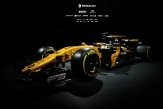
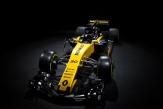

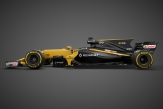

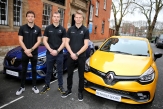
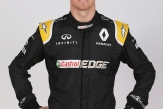
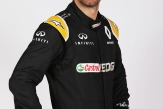
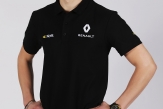
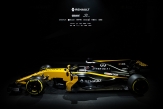

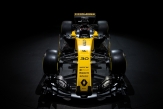
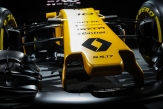
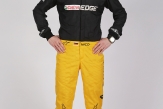
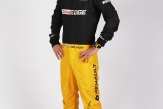
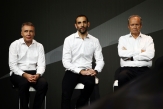
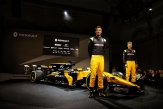
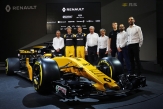
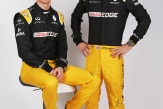
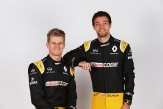
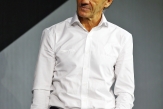
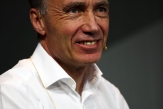
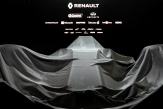
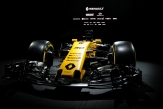
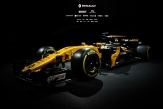
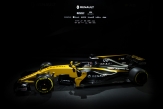
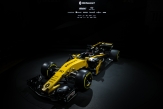
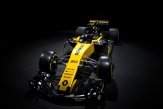
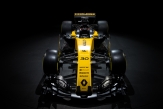
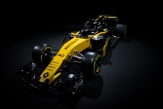
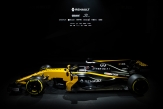
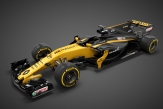
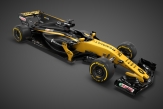
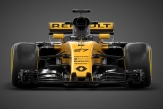

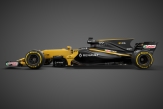
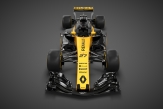
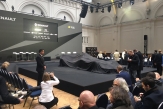


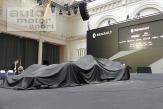
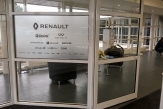
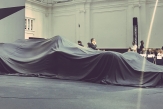

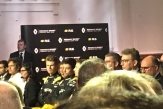
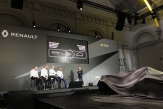
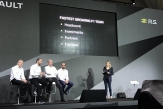
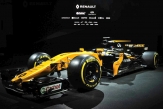
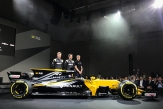
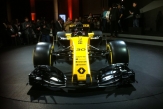
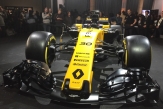
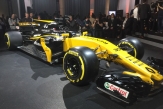
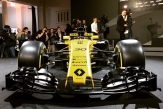
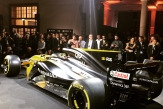

Коментари